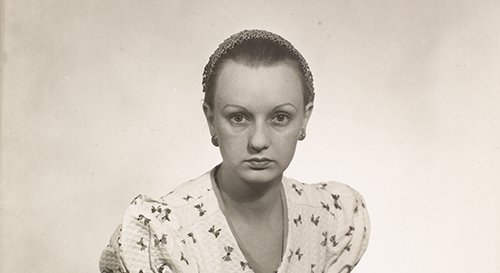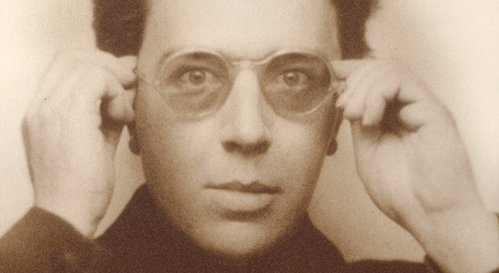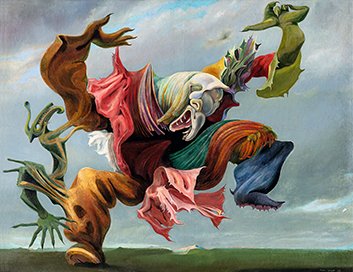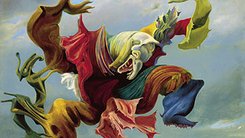
Focus on... "Shell-Hand" by Dora Maar
Shell-Hand is a strikingly dreamlike and enigmatic photomontage by Dora Maar (1907–1997), created in 1934 using a large-format camera in the fashion photography studio she shared at the time with her associate Pierre Kéfer—a space frequented by some of the most prominent Parisian models. In the meticulously composed foreground, seamlessly assembled, the left hand of a female mannequin—overexposed and emerging from a tightly coiled conch—rests in the sand, her polished middle finger sinking into it with languid sensuality. In the distance, forming the backdrop, looms a threatening stormy sky—dark, ominous, pierced by a powerful, almost mystical light—likely an image sourced by the artist herself. The large format of the composition (40.1 × 28.9 cm) heightens its dramatic impact.
Dora Maar, to whom the Centre Pompidou dedicated a major retrospective in 2019, worked throughout the 1930s as a commercial photographer in the fashion and beauty industries. This professional context allowed her to become well versed in traditional photomontage techniques used in illustrated press publications, such as Bravo: Le mensuel de Paris or Le Figaro illustré. In 1933, already active within Paris’s artistic and intellectual circles, she joined the Surrealist group, embracing not only its aesthetic ambitions but also its political and anti-fascist commitments. From an early age, this fiercely independent and accomplished artist cultivated a keen sensitivity to absurdity and strangeness—an inclination already evident in her early street photographs, marked by a fascination with the grotesque in the urban landscape. It is hardly surprising, then, that she adopted photomontage as her preferred Surrealist medium; by 1934, she had created twenty non-commissioned works in this form.
In 1933, already active within Paris’s artistic and intellectual circles, she joined the Surrealist group, embracing not only its aesthetic ambitions but also its political and anti-fascist commitments.
Dora Maar’s Surrealist photomontages are distinguished by their illusion of reality, while also drawing on the iconography central to Surrealist preoccupations: eroticism, sleep, the eye, the unconscious, the maritime realm… Applying the compositional rules of painting, she generally maintained perspective and scale relationships in her dreamlike stagings, where dreams were conceived as a vehicle for liberating the id—that psychoanalytic locus of instinctual drives. In this respect, her photomontages aligned closely with the Surrealists’ goal: to capture the imagery of dreams with ever more objective visual precision.
Shell-Hand is an artwork of stark contrasts: natural elements on the verge of unleashing their fury are juxtaposed with the voluptuousness of a disembodied, manicured hand—emblematic of independence and a liberating gesture. The middle finger penetrates the sand with languour. The nail polish heightens the eroticism of the image; once associated with prostitution, in the early 20th century it became a symbol of emancipation and independence. The conch from which the hand emerges evokes the shell of Triton—the Roman god of wealth and abundance—or Venus, goddess of love, seduction, and feminine beauty. Maar’s evocation of the marine world is also a metaphor for the mysterious depths of the unconscious. With this photomontage, Dora Maar unsettles the viewer, juxtaposing the fantastical nature of the imagery with the realism of its construction. She thus establishes herself as a seminal Surrealist figure in a medium undergoing rapid transformation: photomontage. ◼
Plus d'infos sur Dora Maar sur le site de AWARE https://awarewomenartists.com/artiste/dora-maar/
Related articles
In the calendar
Dora Maar (Henriette Théodora Markovitch, dite)
Sans titre [Main-coquillage], 1934 (détail)
Epreuve gélatino-argentique, 40,1 x 28,9 cm
© Adagp, Paris
Centre Pompidou, Mnam-Cci /Dist. RMN-GP
© Adagp, Paris, photo © Centre Pompidou




